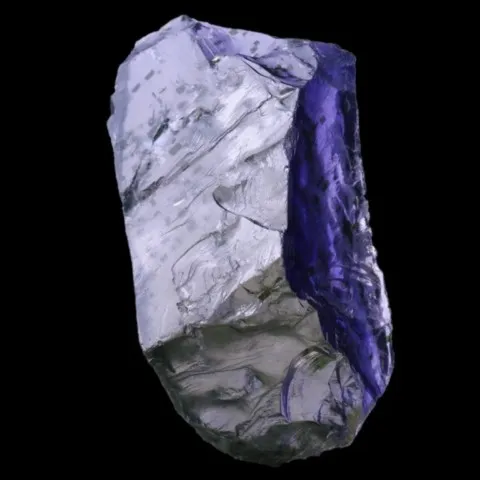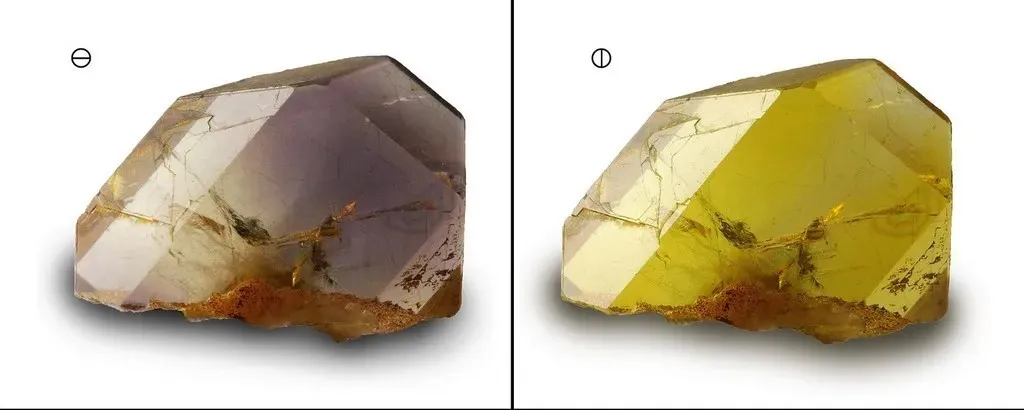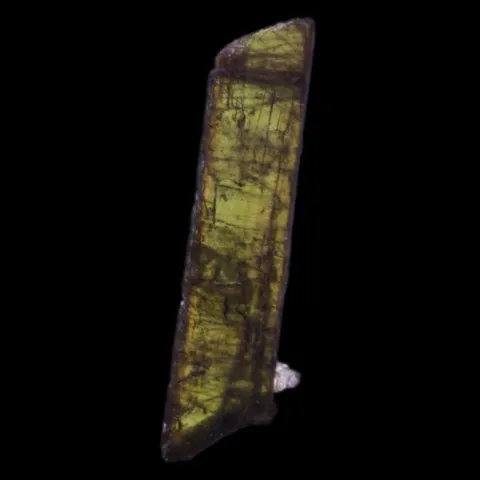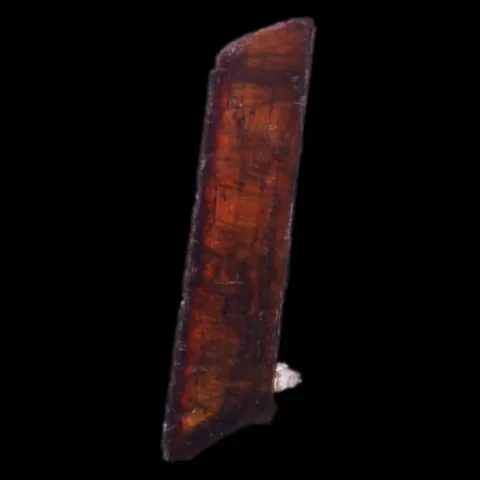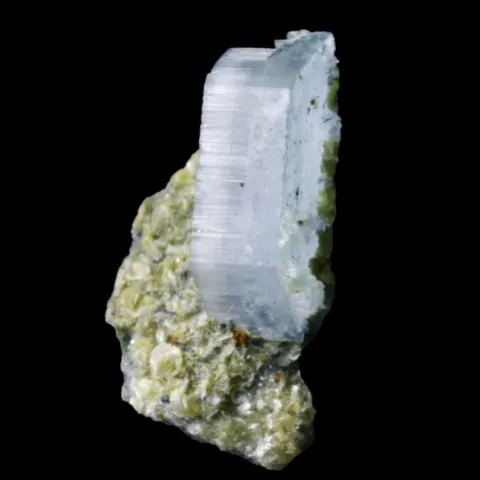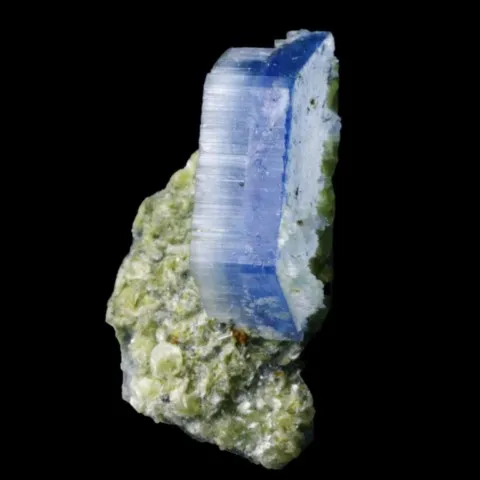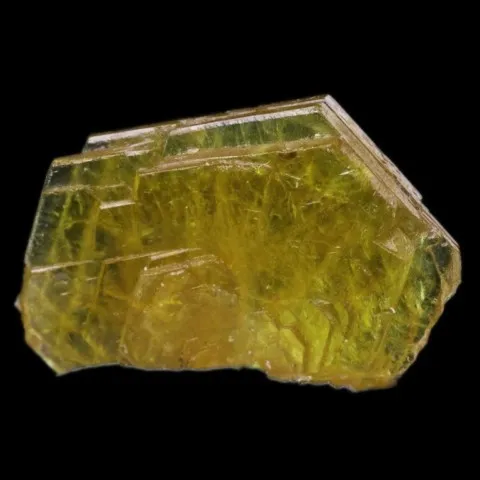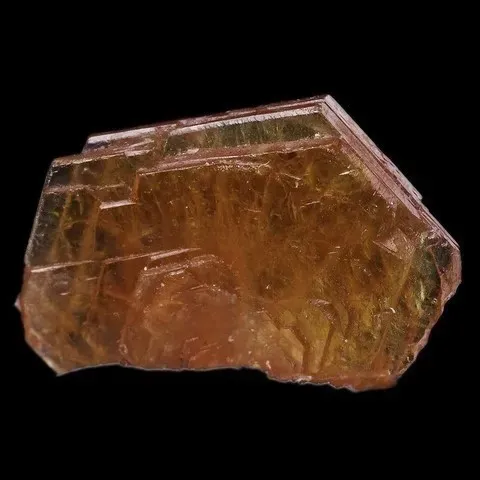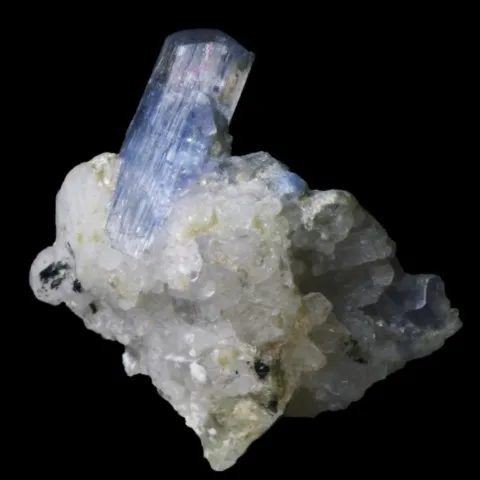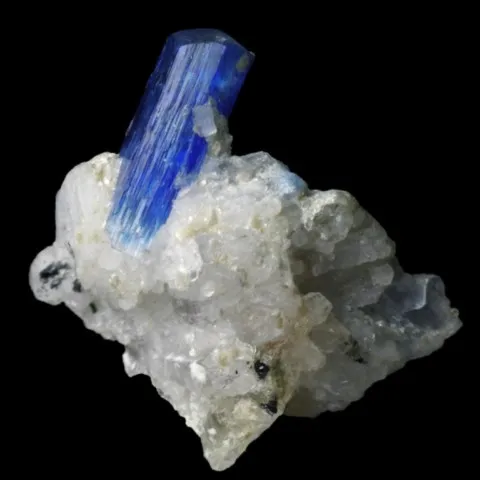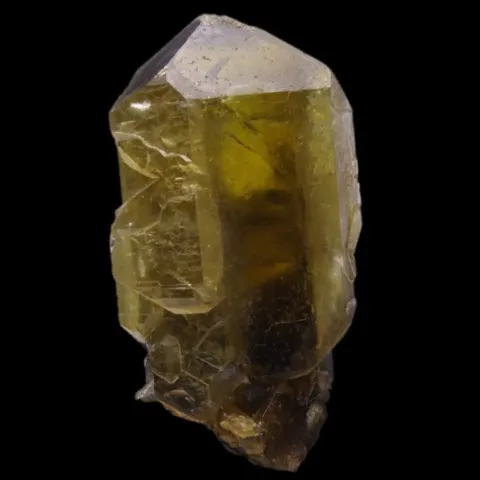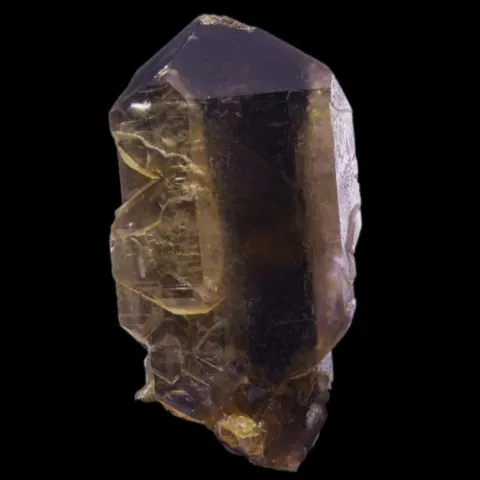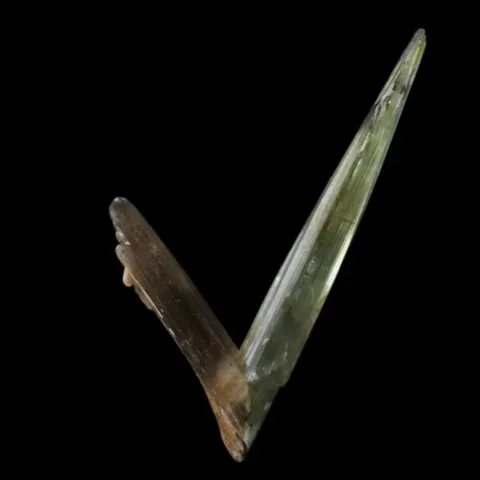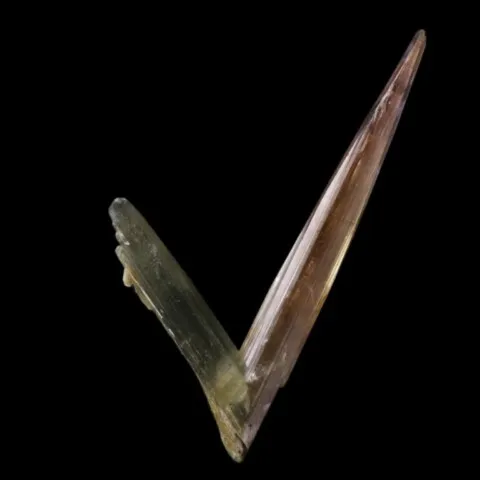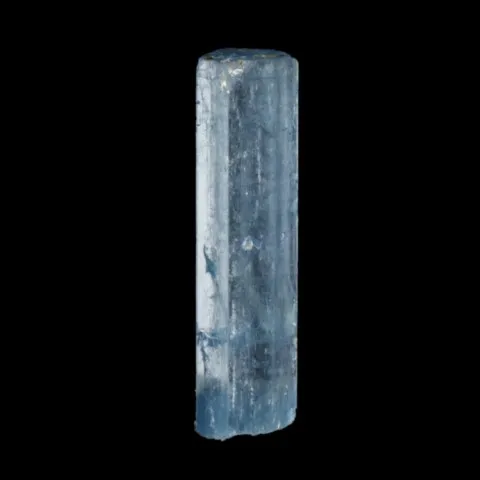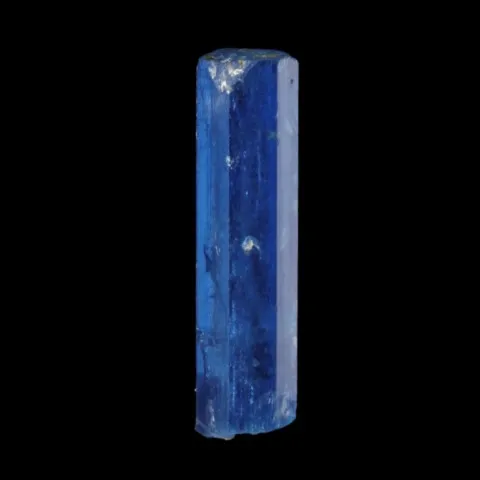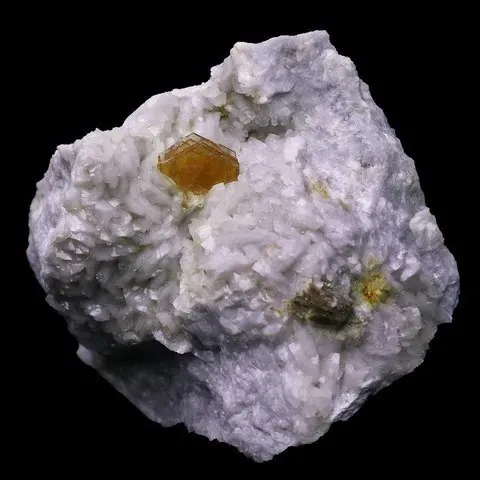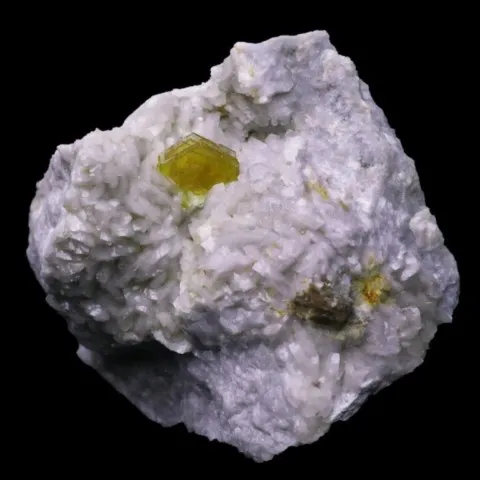Pleochroism in minerals
Among the many optical phenomena that minerals can exhibit, pleochroism stands out for both its visual elegance and its diagnostic value. It is the ability of certain crystals to absorb light differently depending on its vibration direction, giving rise to variations in hue perceptible to the naked eye. This phenomenon, linked to the optical anisotropy of the crystal, is a valuable key for both mineralogists and gemologists. It allows not only to identify mineral species but also to better understand their internal structure and crystalline orientation. In this article, we will explore the nature of pleochroism, the physical principles that underlie it, practical methods for demonstrating it, as well as some emblematic examples.
Photo : Aquamarine with extreme pleochroism from Vietnam © Rémi Bornet
What is pleochroism ?
The term "pleochroism" comes from the Ancient Greek pleon ("many") and chroma ("color"), literally meaning "many colors." This etymology perfectly reflects the nature of the phenomenon : the same crystal, observed from different directions, can appear in several distinct hues, as if it possessed several superimposed colors, revealed depending on the viewing angle. The often spectacular effect is a direct consequence of the way light interacts with the crystal structure and the mineral's specific absorption centers. Pleochroism thus constitutes a kind of optical signature of the crystal, both aesthetic and diagnostic.
This optical phenomenon is specific to anisotropic minerals, that is, those whose physical, and particularly optical, properties vary depending on the direction within the crystal. When unpolarized light (such as natural daylight) enters such a crystal, it is split into several components vibrating in distinct directions. Each of these directions can be absorbed differently by the crystal lattice depending on the atomic bonds and chromophore ions present. This imbalance in the absorption of different vibrations of light gives rise to pleochroism, which can be perceived by a simple change in color depending on the orientation of the mineral.
Crystallography and pleochroism
This behavior is only observable in anisotropic crystals : those in the cubic system or amorphous materials, which are isotropic by nature, do not exhibit it. Pleochroism is therefore an immediate indicator of optical anisotropy.
- In uniaxial minerals, belonging to the hexagonal, rhombohedral, or tetragonal systems, two main vibrations can be distinguished. These two directions can exhibit two different hues, hence the term dichroism.
- In biaxial minerals (orthorhombic, monoclinic, triclinic), three main absorption directions are possible; these minerals can therefore exhibit trichroism, with three observable hues.
It is important to note that pleochroism is most evident when light passes through the crystal in a direction oblique to the optical axes. On the other hand, if we observe a crystal perpendicular to one of its optical axes, all the vibrational directions are equivalent : no variation in color is then perceived.
How to observe pleochroism ?
With a simple polarizing filter :
Observing pleochroism can be done very simply using a single polarizing filter, like those used in photography or optics. This filter allows you to select a single direction of light vibration. By placing this filter between the light and the observer (or between the light source and the mineral), then rotating it, you can highlight the mineral's characteristic hues. The crystal then appears successively in different colors, depending on the orientation of the polarizer. This method has the advantage of being simple, quick, and does not require sophisticated equipment.
It is entirely possible to obtain polarizing filters without resorting to expensive laboratory equipment. Circular filters, commonly used in photography, are particularly accessible. These filters generally screw onto the front of camera lenses, but they can also be used handheld for direct observation. Simply hold them and rotate them in front of the crystal. Plastic polarizer sheets are an economical option: they can be cut to create custom filters, to attach to a frame, a magnifying glass, or simply to hold in the hand. Although less durable than photographic filters, they are practical and inexpensive. Some LCD screens also emit polarized light. By placing a crystal on such a screen with a white background and rotating it, pleochroism can be easily observed. However, with the rise of LED screens, this method is now more difficult to apply. Finally, 3D glasses, which incorporate polarizing filters, can also be used for this observation.
With a dichroscope :
In gemology, a dichroscope is commonly used. This small, portable instrument allows one to visualize the different hues of a pleochroic crystal.
There are two main types :
- The calcite dichroscope uses a birefringent optical calcite prism, which separates perpendicular vibrations. The user then observes two juxtaposed images of the crystal. If the mineral is pleochroic, these two images will have different colors; otherwise, they will appear identical.
- The simpler polarizing filter dichroscope allows one to observe hue variations by rotating a polarizer in front of the eye. Although it only displays one image at a time, it is very effective for quickly detecting marked pleochroism.
The dichroscope is particularly useful in identifying colored gemstones, as it allows for rapid analysis, even on mounted or small stones.
Using a polarizing microscope
A more precise and systematic method in petrography involves using a polarizing microscope with plane polarized light, i.e., using only the polarizer placed under the stage, without activating the analyzer located above the objective. When the stage, on which a thin section containing the mineral rests, is rotated, variations in color are observed due to the different vibration directions of the light. These colors, sometimes subtle, are directly related to the directional absorption properties of the crystal and can be used to determine the crystal orientation or identify the mineral.
Examples of pleochroic minerals
Most non-cubic colored minerals exhibit some form of pleochroism, often characteristic.
Here are some notable examples :
- Cordierite (or iolite) is famous for its intense trichroism : it can appear purplish-blue, yellowish, or colorless depending on the viewing direction.
- Tanzanite, a variety of zoisite, exhibits blue, violet, and yellow-brown trichroism, making it highly sought after in jewelry.
- Andalusite is also a striking example, displaying highly contrasting green, red, and yellow hues.
- Tourmaline, well known to collectors, is often trichroic, particularly in its iron- and manganese-rich varieties.
The value and applications of pleochroism
Pleochroism is a valuable tool in mineralogy, petrography, and gemology. It can be used to distinguish visually similar minerals, identify the optical orientation of a crystal, and detect growth zonations.
In gemology, recognizing marked pleochroism can help authenticate a natural gemstone or detect heat treatment.
However, pleochroism should not be confused with other color phenomena, such as interference colors, visible in cross-polarized light (with a polarizer and analyzer). The latter are due to birefringence, not directional absorption.
Conclusion
In short, pleochroism is a direct manifestation of the optical anisotropy of crystals, and it provides a valuable window into their internal structure. Its simple and accessible demonstration using polarizing filters, a microscope, or a dichroscope allows not only an aesthetic appreciation of minerals, but also a more detailed understanding of their physical properties. At the crossroads of science and sensory observation, pleochroism illustrates how mineralogy can combine analytical rigor and visual wonder.

